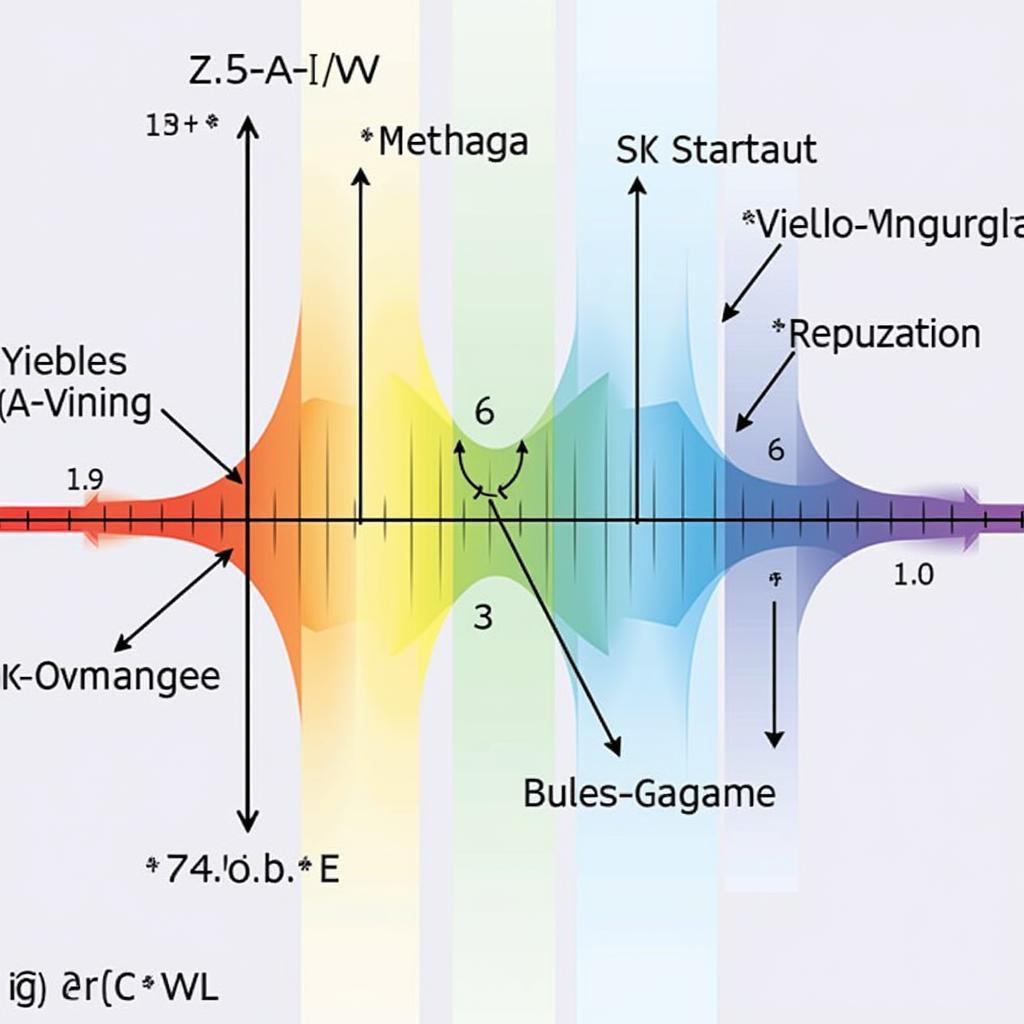When we think about light, we often picture the vibrant colors of a rainbow. But have you ever wondered how those colors are created? The answer lies in the fascinating world of wavelengths. Each color in the visible light spectrum has a unique wavelength, and understanding this can unlock a deeper appreciation for the beauty around us. So, let’s dive into the world of light and discover which color holds the title for the shortest wavelength!
Understanding the Visible Light Spectrum
Visible light, the type of electromagnetic radiation our eyes can see, is just a small part of the electromagnetic spectrum. This spectrum encompasses a vast range of wavelengths, from incredibly long radio waves to incredibly short gamma rays. Visible light sits somewhere in the middle, sandwiched between infrared radiation (longer wavelengths) and ultraviolet radiation (shorter wavelengths).
 Electromagnetic Spectrum
Electromagnetic Spectrum
Within the visible light spectrum, colors are arranged in a specific order based on their wavelengths, creating the familiar rainbow sequence:
- Red: Longest wavelength
- Orange
- Yellow
- Green
- Blue
- Indigo
- Violet: Shortest wavelength
And the Winner Is… Violet!
As you move from red to violet across the visible light spectrum, the wavelength gradually decreases. This means that violet light has the shortest wavelength among all the visible colors.
To put it into perspective, red light has a wavelength of roughly 700 nanometers, while violet light sits at around 400 nanometers. A nanometer is one billionth of a meter—that’s incredibly small!
“Think of it like waves in the ocean,” explains Dr. Sarah Williams, a physicist specializing in optics. “Red light is like gentle waves with a long distance between crests, while violet light is like rapid, choppy waves with crests close together.”
The Impact of Short Wavelengths
The shorter wavelength of violet light has some interesting implications. For instance, it explains why the sky appears blue. When sunlight enters the Earth’s atmosphere, it scatters off tiny air molecules. Blue and violet light scatter more effectively than other colors due to their shorter wavelengths. While violet light scatters the most, our eyes are more sensitive to blue, resulting in the blue hue we perceive.
Beyond the Visible: Exploring the Electromagnetic Spectrum
While violet light marks the limit of our vision, the electromagnetic spectrum extends far beyond. Ultraviolet (UV) radiation, with even shorter wavelengths than violet, is invisible to our eyes but plays a significant role in our lives. It’s responsible for sunburns and is also used in various applications like sterilization and black lights.
On the other end of the spectrum, beyond red light, lies infrared radiation. We experience infrared radiation as heat. It’s used in night vision goggles, remote controls, and even to transmit data wirelessly.
Unveiling the Colorful Secrets of Light
Understanding the relationship between color and wavelength unlocks a deeper understanding of the world around us. From the captivating blue sky to the vibrant colors of a sunset, we can appreciate how the properties of light create these awe-inspiring sights.
So next time you admire a rainbow, remember that you’re witnessing the visible light spectrum in all its glory, with violet proudly holding the title of the shortest wavelength!
FAQ
1. Why can’t we see UV or infrared light?
Our eyes have specialized cells called cones that detect different wavelengths of light within the visible spectrum. UV and infrared radiation fall outside this range, so our eyes are not equipped to perceive them.
2. Does the color of an object affect its temperature?
Darker colors tend to absorb more visible light and convert it into heat, which is why they feel warmer than lighter colors, especially under direct sunlight.
3. What is the relationship between wavelength and energy?
Electromagnetic radiation with shorter wavelengths, like violet light, carries more energy than radiation with longer wavelengths, like red light.
4. What are some other examples of electromagnetic radiation with short wavelengths?
X-rays and gamma rays have even shorter wavelengths than UV radiation and are used in medical imaging and cancer treatments, respectively.
Need Help with Your Next Color Project?
Choosing the right colors for your home or business can be a daunting task. Contact Color Box Hanoi today! Our team of color experts and design professionals can help you create a space that reflects your unique style and vision. Call us at 0373298888, email us at [email protected], or visit our showroom at 86 Cầu Giấy, Hà Nội. We’re here to help you bring your color dreams to life!
